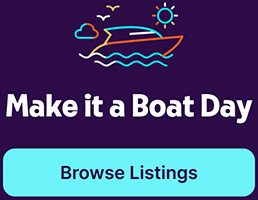Anchoring your boat securely is an essential part of boating. One of the key components of this process is the anchor chain. But how much anchor chain is enough? This is a common question among boaters, both beginners and experienced ones. In this guide, we'll provide some tips to help you determine the right length of anchor chain for your boat.
Understanding the Role of the Anchor Chain
The anchor chain, also known as the rode, plays a crucial role in anchoring your boat. It connects the anchor to the boat, ensuring that the anchor stays in place on the seafloor. The weight of the chain also helps to keep the anchor's shank low, which improves its holding power.
However, the length of the anchor chain can significantly influence its effectiveness. Too short, and it may not reach the seafloor, rendering the anchor useless. Too long, and it can be cumbersome to handle and store, and may even pose a safety risk. Therefore, it's important to determine the right length for your specific needs.
Factors to Consider When Determining Anchor Chain Length
Several factors can influence the ideal length of your anchor chain. Understanding these factors can help you make an informed decision.
Boat Size
The size of your boat is one of the most important factors to consider. Larger boats generally require longer anchor chains due to their greater weight and windage. Smaller boats, on the other hand, can usually get by with shorter chains.
As a rule of thumb, your anchor chain should be at least as long as your boat. However, this is just a starting point, and you may need to adjust this length based on the other factors discussed below.
Water Depth
The depth of the water where you plan to anchor is another critical factor. The deeper the water, the longer your anchor chain needs to be. This is because the chain needs to reach the seafloor and still have enough length left over to create a proper scope.
Scope is the ratio of the length of the anchor chain to the depth of the water. A common recommendation is a scope of 7:1 in calm conditions, meaning your anchor chain should be seven times the depth of the water. In rougher conditions, a higher scope may be necessary.
Seafloor Conditions
The type of seafloor also influences the ideal length of your anchor chain. In areas with a rocky or uneven seafloor, a longer chain can help ensure that the anchor remains secure. On the other hand, in areas with a sandy or muddy seafloor, a shorter chain may be sufficient.
It's also important to consider the potential for the chain to become tangled. In areas with a lot of debris or underwater obstacles, a shorter chain can help reduce the risk of entanglement.
How to Measure Your Anchor Chain
Once you've considered the factors above, it's time to measure your anchor chain. Here's a step-by-step guide on how to do it:
- Start by measuring the length of your boat. This will give you a baseline for your anchor chain length.
- Determine the average depth of the water where you plan to anchor. Multiply this depth by the recommended scope to calculate the minimum length of your anchor chain.
- Consider the seafloor conditions. If the seafloor is rocky or uneven, you may need to add a few extra feet to your chain length. If it's sandy or muddy, you may be able to subtract a few feet.
- Finally, consider your boat's handling and storage capabilities. If your boat has limited storage space or if it's difficult to handle a long chain, you may need to adjust your chain length accordingly.
Remember, these measurements are just a starting point. It's always a good idea to carry extra chain on board in case you need to anchor in deeper water or in rough conditions.
Additional Tips for Using Your Anchor Chain
Once you've determined the right length for your anchor chain, here are a few additional tips to help you use it effectively:
- Always inspect your anchor chain before and after use. Look for signs of wear and tear, such as rust, kinks, or damaged links. Replace your chain if necessary.
- Practice setting and retrieving your anchor in different conditions. This will help you become more comfortable with the process and allow you to adjust your technique as needed.
- Consider using a chain stopper or snubber line. These devices can help reduce the strain on your windlass and prevent the chain from running out uncontrollably.
- Finally, always follow safe anchoring practices. Never anchor in shipping lanes, near other boats, or in restricted areas. Always monitor your boat while at anchor to ensure it remains secure.
In conclusion, determining the right length for your anchor chain is a crucial aspect of safe and effective boating. By considering factors like boat size, water depth, and seafloor conditions, and by regularly inspecting and practicing with your anchor chain, you can ensure that you're always prepared for any anchoring situation.
Turn Your Anchoring Expertise into Profit with Getmyboat
Now that you're equipped with the knowledge to anchor confidently, why not turn that expertise into a thriving business? With Getmyboat, you can list your boat for free and tap into a global audience eager to experience boating. Our comprehensive tools make managing your boating business a breeze, from attracting new customers with standout listings to seamless payment processing. Don't just navigate the waters; navigate the market and become a Superowner. Ready to expand your reach and earn more? List your boat today and set sail towards greater business horizons.






